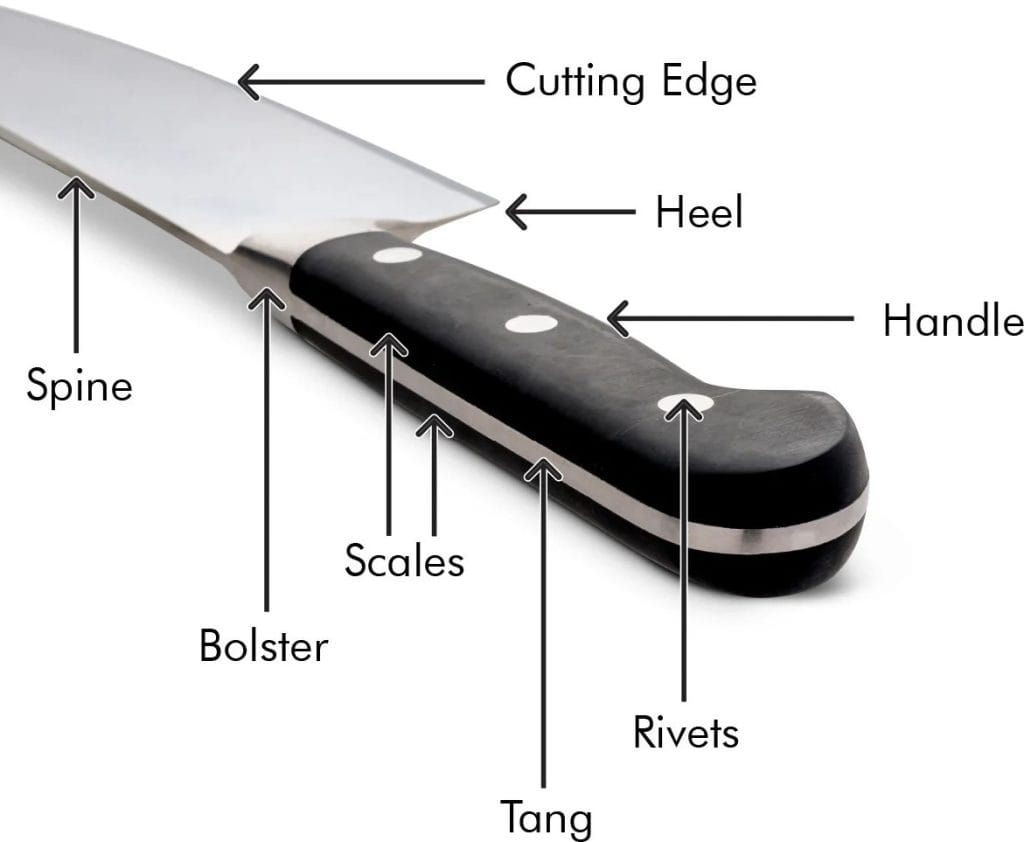Understanding the Parts of a Knife
A knife is a versatile tool that has been used for centuries, adapting to various needs, from hunting and survival to craftsmanship and everyday use. Here’s a breakdown of the essential parts of a knife, each designed to serve a specific function that provides balance, durability, and control for the user.
- Cutting Edge: This is the sharpened part of the blade, used for cutting, carving, or piercing. The precision and efficiency of a knife largely depend on the quality of its edge.
- Spine: The spine is the top, unsharpened edge of the blade. Its thickness adds weight and stability to the knife, facilitating handling. A thicker spine can indicate a stronger knife.
- Heel: Located at the back end of the cutting edge, the heel is the thickest part of the blade. It’s used when extra pressure is needed, such as when cutting through tough or resistant materials.
- Bolster or Guard: This is the part that connects the blade to the handle and provides additional balance to the knife. The guard acts as a finger protector, preventing them from sliding onto the blade. Not all knives have bolsters, but those that do tend to feel more robust.
- Tang: The tang is the extension of the blade that goes into the handle. Full-tang knives, where the tang runs the entire length of the handle, offer greater stability and durability. Partial tangs are lighter but generally less robust.
- Scales: The scales are the two pieces of material (often wood, plastic, metal, or composite) attached to each side of the tang to form the handle. They provide comfort and grip for the user.
- Handle: The handle is the part of the knife designed to be held. A well-designed, ergonomic handle reduces hand fatigue and ensures a secure grip during use.
- Rivets: Rivets are metal pins that secure the scales to the tang. They provide additional durability, ensuring that the handle remains firmly attached over time.
Understanding the parts of a knife not only helps in choosing the right one for each task but also allows for more efficient and safe use. Each component, from the cutting edge to the rivets in the handle, plays a role in optimizing the functionality of this essential tool.
